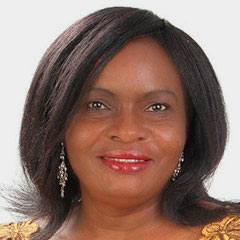South Africa gained its independence in 1994 with Nelson Mandela becoming the first black President on the fall of apartheid. The problem was: Even after the demolition of the apartheid system, social cohesion was a challenge as people still lived and gathered in separate groups, according to their race. Freedom had come but the people still segregated themselves. One of the ways to promote social cohesion is through sport. The hosting of the 2010 World Football cup therefore was a welcome opportunity.
The photograph shows the First National Bank Stadium or simply FNB Stadium. It is also known as the Calabash, because of its resembling an African vase. It is located near Nasrec and bordering Soweto and Johannesburg.
The Department of Arts and Culture defines Social cohesion as “the degree of social integration and inclusion in communities and society at large, and the extent to which mutual solidarity finds expression among individuals and communities”. This means that South African communities or society is cohesive when “ the extent that the inequalities, exclusions and disparities based on ethnicity, gender, class, nationality, age, disability or any other distinctions which engender divisions, distrust and conflict are reduced and/or eliminated in a planned and sustained manner. Thus, with community members and citizens as active participants, working together for the attainment of shared goals, designed and agreed upon to improve the living conditions for all”.
Based on the above understanding, building a nation is a complex process that entails “a society with diverse origins, histories, languages, cultures and religions come together within the boundaries of a sovereign state with a unified constitutional and legal dispensation, a national public education system, an integrated national economy, shared symbols and values, as equals, to work towards eradicating the divisions and injustices of the past; to foster unity; and promote a countrywide conscious sense of being proudly South African, committed to the country and open to the continent and the world“.
The hosting of the World Football Cup therefore was an optune moment in the history of the nation. According to Barolsky, (2011) sport was used as a catalyst to build a non-racial, non-sexist, democratic, prosperous and free South Africa. The FIFA World cup in 2010 referred to it as „African and South African. The Bafana Bafana team received great support from home. The social cohesion was divided into three dimensions: Civic, Social and Economic."
The impact of the FIFA World cup was significant in building social cohesion. There was little doubt that the World cup was an “extraordinarily unifying moment for the country as whole, which broke down social, racial and even gendered barriers as women were increasingly drawn into the fervor around the a game usually predominantly watched by men.” (Barolsky, 2011)
References
- Barolsky, V (2011).Impact of 2010 soccer World Cup on social cohesion and nation-building, Technical Report · January 2011.
- DOI: 10.13140/2.1.2007.5841
- Retrieved from https://www.researchgate.net/publication/271700976
- Department of Arts and Culture statement on Social Cohesion
published April 2020

